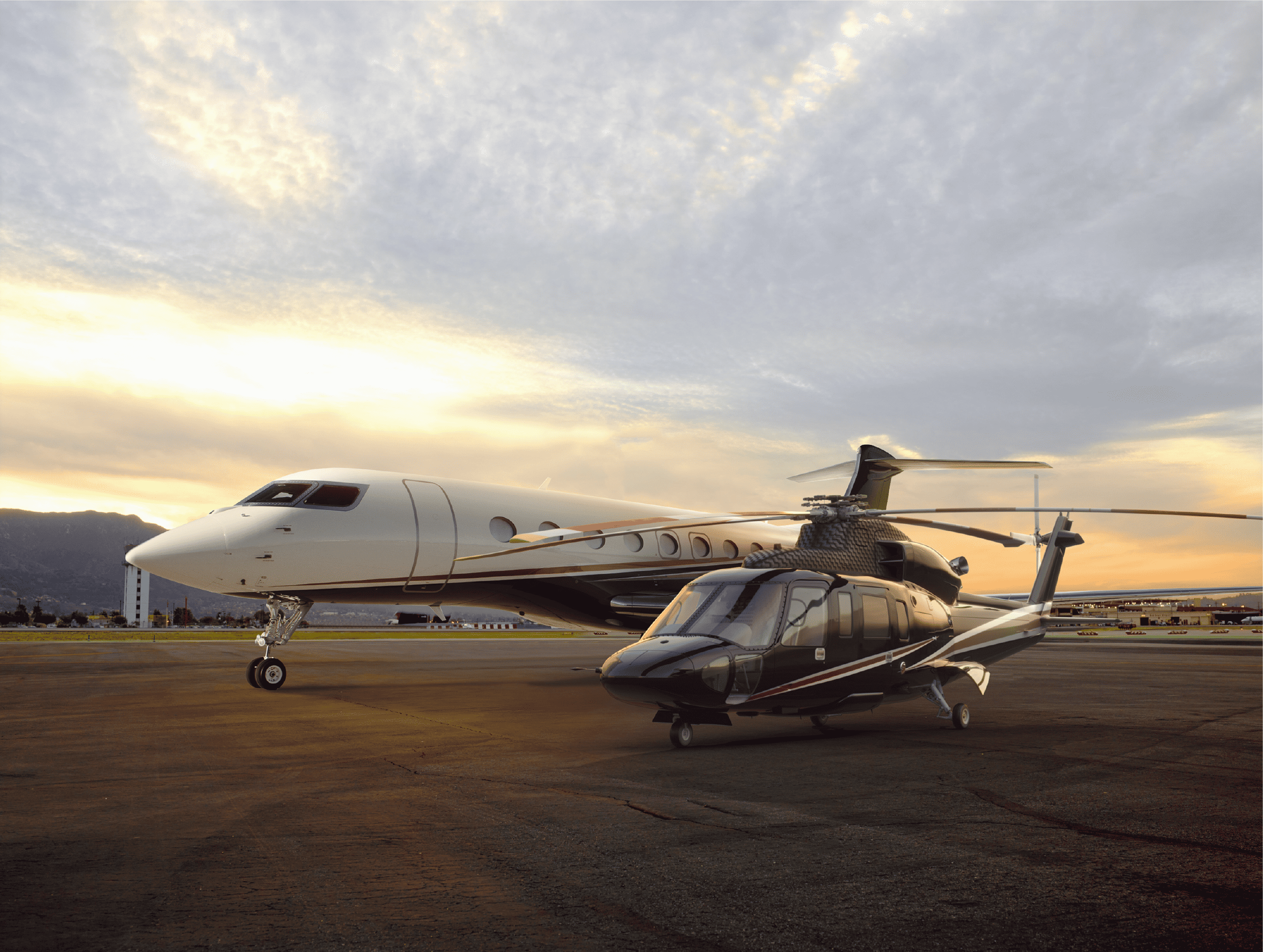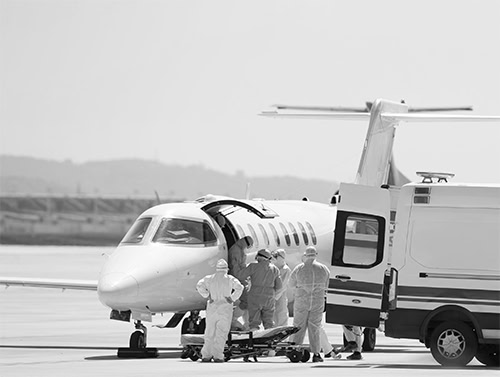Air Ambulances: Jet Airplanes vs. Helicopters
Bluedot largely specializes in fixed-wing or Air Ambulance jets as well as stretchers on commercial flights. This is not to say that helicopters are not used, but they serve special purposes. For most international, long-distance flights, there’s no question: the aircraft will be a jet. Besides, there are several other aero and medical factors that come into play in the choice of aircraft.
Helicopters are usually called for emergency incidents such as accidents and rescue on mountainous or other rough terrains as well as in densely built cities. This is because they can land almost anywhere that’s flat with a mere 100 sq ft of space and very close to the site needing attention. They are nimble, with flexible flight paths and short turnaround times. At the same time, trees, power cables, and other obstacles can make helicopter journeys hazardous.
Airplanes on the other hand require landing strips or airports. They cannot usually land close to accident sites or fly near dense or low-altitude terrain. In fact, jet airplanes perform at a whole other level of action: that of long-distance transfers, and often, high-altitude flying, some of which can beat some odds of local weather and may be safer, smoother, and more comfortable for patients.
Once commissioned for long-distance flight, Air Ambulance jets have the advantage of space (and stretchers on commercial jets can be even more spacious). They can be converted into emergency rooms even at altitudes as high as 40,000 ft. with the facility to use technology such as ventilators across thousands of kilometers. But airplanes are more susceptible to altitude-related problems precisely because they travel at higher altitudes. However, they have pressurized cabins which help correct these problems. Helicopters are also susceptible to altitude-related issues since even at an elevation of 1500 feet, atmospheric pressure decreases considerably.
A number of medical circumstances favor the use of fixed-wing jet airplanes, even at altitudes below 10,000 feet, when a pressurized cabin is required. This includes respiratory diseases, unstable angina, multiple organ failure, cancer, stroke, congestive heart failure, heart attack, hemorrhagic stroke, and peripheral arterial disease. Patients with Flicker Vertigo or photosensitive epilepsy must also avoid helicopters. And due to weight limitations, Bariatric patients almost always need to use airplanes.
Weather conditions also often favor the use of fixed-wing airplanes, including icing. Helicopters don’t have anti-icing equipment like fixed-wing jets do, such as heating the edge of the wing or inflating pneumatic boots. Icing is a cause for concern after lift-off too. The temperature decreases as the aircraft gain altitude, increasing the risk of icing – especially when humidity is high.
Most helicopters do not have IVF equipment (electronic equipment that allows pilots to gauge conditions even when their window vision is obscured) and have trouble landing in the rain, fog, and snow. Fixed-wing aircraft always include an IVF system, although they too will take extra caution during takeoff and landing due to slippery conditions.
Helicopters are therefore best used for short-distance, trauma-related emergency situations where time is crucially important, while fixed-wing jets are a better option in most other situations.
Hope. Positivity. Journeys of care.
At your service.
Team Bluedot
Sources:



